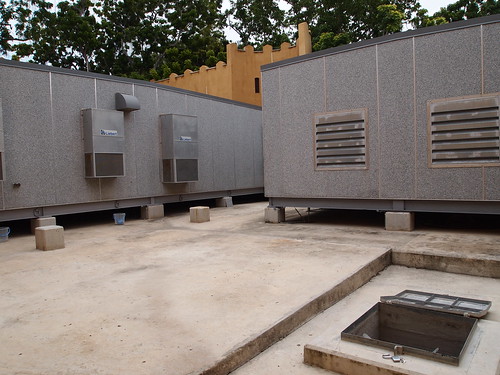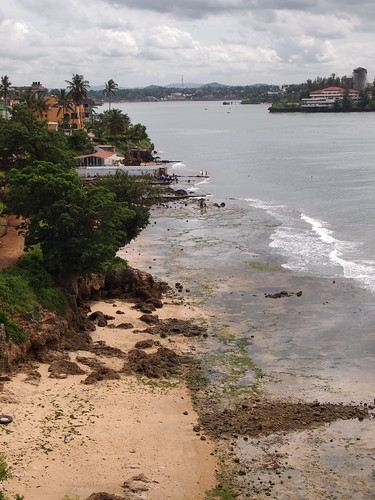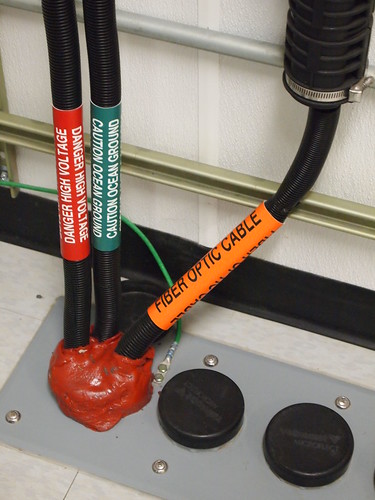This Is Where The Magic Happens

 Seventeen years ago Wired published Neal Stephenson’s magisterial epic “Mother Earth Mother Board”, about the web of undersea fibre-optic cables being built to connect all of humanity. Well – almost all. Africa, again, was left behind. Until 2009, all of East Africa could only connect to the Internet over slow and hugely expensive satellite links.
Seventeen years ago Wired published Neal Stephenson’s magisterial epic “Mother Earth Mother Board”, about the web of undersea fibre-optic cables being built to connect all of humanity. Well – almost all. Africa, again, was left behind. Until 2009, all of East Africa could only connect to the Internet over slow and hugely expensive satellite links.
Finally, two years ago, SEACOM laid a cable along the East African coast to Mumbai; then tributaries were run thousands of kilometers inland, as far as Uganda and even Rwanda; and later this year, a direct connection to Europe will be lit up. This has chopped the cost of bandwidth from US $5,000 per megabit/s per month to approximately $100, hugely increased capacity to 1.28 terabits/second, and given more than 100 million people (and counting) access to broadband Internet for the very first time. Today I visited their cable landing site in Mombasa, Kenya.
It doesn’t look like a high-tech hub. The site stands in the shadow of Fort Jesus, an ancient castle constructed by the Portuguese in 1593, and to better blend in with its UNESCO World Heritage surroundings, its outer walls are built to look like a Swahili keep:
But within are prefab buildings constructed in New Jersey (of all places) and shipped halfway around the world. The open trapdoor leads to the cable…
…which runs seven kilometres out to the branching station, and then 3,000 kilometers northeast to Mumbia, 2,000 km northwest to Egypt, and another 3,000 south to South Africa:
An observant eye can see the path the cable takes, beneath the shore below Fort Jesus:
Landing the cables is the hard part. It took three months to dig, lay, and cover those seven kilometres, using local barges and professional divers. By contrast, the cable that runs to Djibouti along the 1500 kilometres of Somalia’s wild coast was laid in less than a month … not counting the 55 days that the ship had to rest in port because of the danger of pirates.
That Djibouti branch isn’t even lit up yet. The cable is laid, and ready – but three kilometers of it that pass through Egyptian soil remain a sticking point. “Each country moves at its own pace,” sighs Mahmoud Noor, manager of the Kenyan landing station (which also double’s as the system’s backup Network Operations Center.) He won’t go into details, but I get the impression that the problem is more political than technical. When Egypt comes online, hopefully later this year, SEACOM capacity will leap upwards again, and lag times will halve. Until then, all their external traffic has to go to Mumbai, then be routed elsewhere by leased lines.
The undersea cable consists of the fibres themselves, as thin as human hairs, wrapped in a copper sheath that carries up to 10,000 DC volts to power the repeaters every 100km that keep the signals comprehensible. In depths less than kilometre, this is all sheathed in thick additional armour. Here Peter Ouko, a SEACOM engineer, displays a cutaway example of the cable:
…and here’s where it enters the New-Jersey-built prefabs after its monumental journey along the continent.
The interior is cavernous, antiseptic, and honeycombed with cables:
An outgoing sheaf of fibre connects to the next building, where customer equipment goes, and where SEACOM is installing added-value options: an exchange to route connections within Kenya, Uganda, Rwanda (and Ethiopia, when they finally connect) directly without having to wastefully forward that data to Mumbai or London first, and an IP service so that customers can connect directly to routers without having to step down from SDH themselves.
It’s a triumph of engineering, and a profoundly important one. In Kenya today, a SIM card costs less than a beer, and a minute of 2G Internet access costs only 2.5 cents. That’s still too much, but far less than in the bad old days. Once South Africa was the continent’s tech powerhouse, but now they grumble about how good the Kenyans have it -



































0 comentarios:
Publicar un comentario
Tus comentarios nos motivan a continuar...